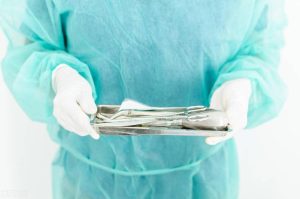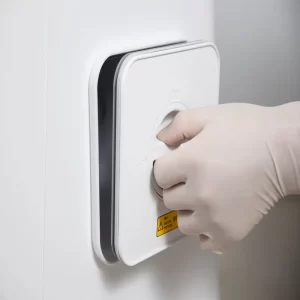Respiratory machines play a crucial role in the field of healthcare, with exhalation valves being one of their core components. Ensuring the hygiene and disinfection of these valves is of paramount importance. This article will provide a detailed explanation of two commonly used methods for disinfecting exhalation valves to guarantee the safety and cleanliness of medical equipment.
Method One: High-Temperature Disinfection
High-temperature disinfection is an effective method applicable to many imported respiratory machines. However, it's worth noting that high-temperature disinfection has some drawbacks. Here are the specific steps:
-
- Remove the exhalation valve from the respiratory machine.
- Take off the metal membrane from the exhalation valve and place it in a clean, safe location.
- Open the high-temperature disinfection equipment.
- Place the exhalation valve into the high-temperature disinfection device.
- Initiate the high-temperature disinfection process.
One of the drawbacks of high-temperature disinfection is that it requires special equipment, which can potentially increase the operational costs of medical facilities. Additionally, high-temperature disinfection takes a relatively long time, which may impact the availability of the respiratory machine.
Despite these limitations, high-temperature disinfection remains an effective high-level disinfection method capable of eliminating microorganisms lurking within the exhalation valve.
Method Two:complex alcohol and Ozone Disinfection
For some domestically produced respiratory machines, high-temperature disinfection may not be applicable. In such cases, complex alcohol and ozone disinfection can be employed. Both of these substances are classified as high-level disinfectants, effective at killing microorganisms. Alcohol is not suitable here, as per disinfection technology management regulations, it falls under intermediate-level disinfection.

Anesthetic Respiratory Circuit Disinfection Machine: One-Click Internal Circulation Disinfection
In addition to exhalation valve disinfection, the entire respiratory machine requires periodic disinfection to maintain equipment hygiene and safety. The anesthetic respiratory circuit disinfection machine provides a convenient, quick, and thorough disinfection method.
Exhalation Valve Disinfection
-
- Remove the exhalation valve from the respiratory machine.
- Prepare the anesthetic respiratory circuit disinfection machine.
- Place the exhalation valve into the disinfection machine.
- Connect external tubing to the respiratory machine.
- Inject the appropriate disinfectant.
- Click "Fully Automatic Disinfection" on the operation screen.
This process achieves one-click internal circulation disinfection, saving time and effort while ensuring high-level disinfection of the exhalation valve.

Put the disinfection accessories into the disinfection cabin
Disinfection of the Entire Respiratory Machine
-
- Connect external tubing to the respiratory machine.
- Inject the appropriate disinfectant.
- Click "Fully Automatic Disinfection" on the operation screen.
The anesthetic respiratory circuit disinfection machine can disinfect the entire respiratory machine, ensuring the safety and hygiene of medical equipment.
Special Considerations
While respiratory machines provide one-way airflow, the inhalation side can also be contaminated. This is because condensation in the respiratory machine tubing may reflux into the inhalation valve, leading to internal contamination. Therefore, when disinfecting the exhalation valve, it's essential to ensure the overall hygiene of the entire respiratory machine system.
Conclusion
Disinfection of respiratory machines is a crucial step in ensuring the hygiene and safety of medical equipment. Depending on the type of respiratory machine, selecting the appropriate disinfection method is essential to safeguard the health and safety of patients and healthcare professionals.